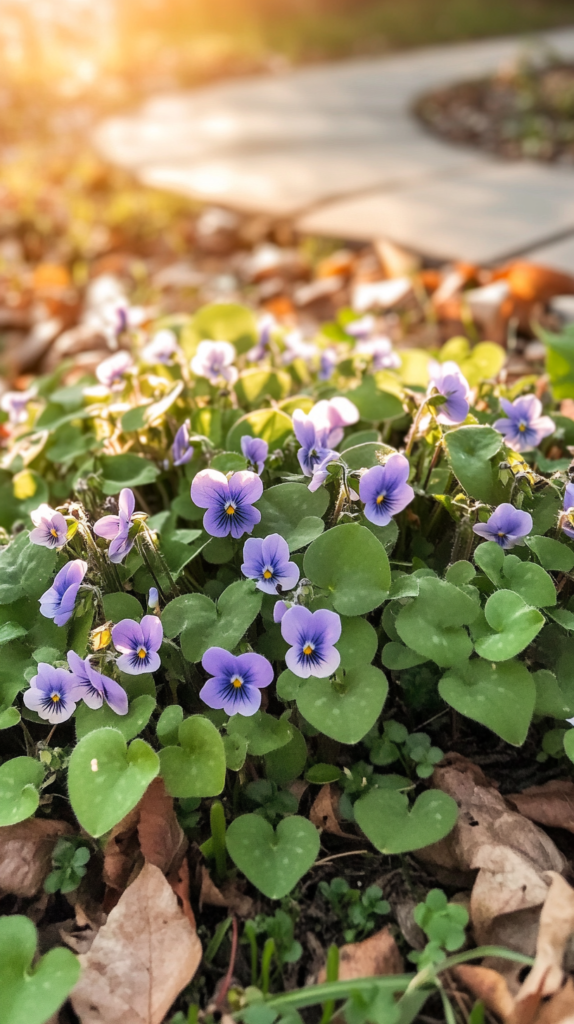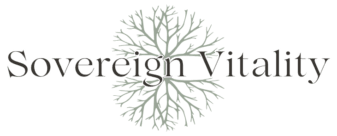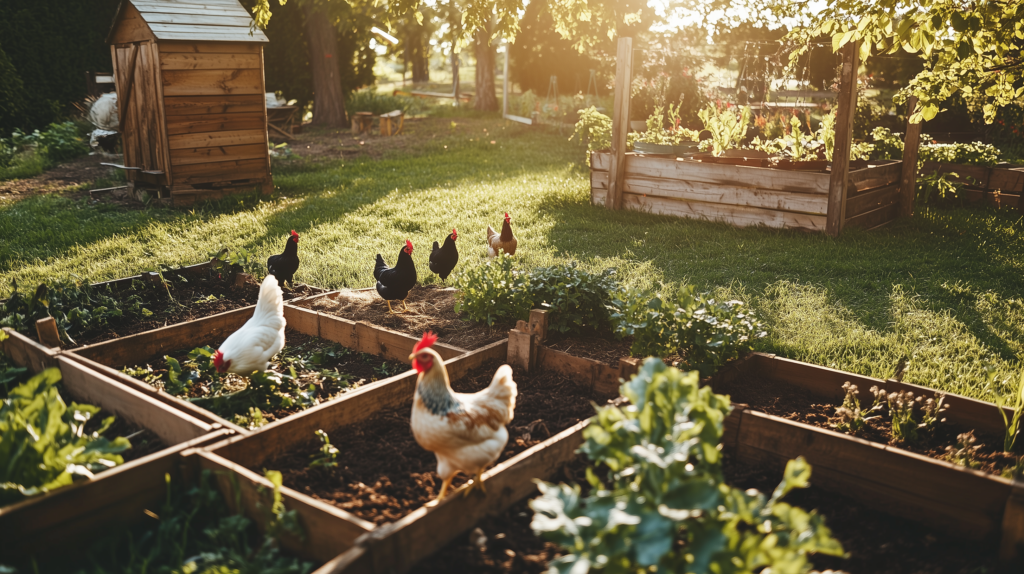This post may contain affiliate links, including those from Amazon Associates. If you make a purchase through these links, I may earn a commission at no additional cost to you. Learn more about our affiliate policy.
Ever walked past a patch of weeds and wondered if they’re secretly edible?
I did, and it sparked my love for wild foraging, even in the heart of the city. There’s something so empowering about finding food growing right where you live, hidden in plain sight.
I used to think foraging was for folks with sprawling forests out back, but living in an apartment taught me otherwise. Urban spaces are full of surprises, if you know where to look.
Maybe you’ve felt that pull too, a longing to connect with nature and reclaim a bit of self-sufficiency, but the idea of starting feels daunting.
We’ll uncover simple steps, safe finds, and even a few recipes to turn your harvest into something delicious.

Why Wild Foraging Matters for Urban Self-Sufficiency
Foraging flipped a switch for me. It’s not just about free food, though that’s a perk, it’s about feeling empowered in a world that can feel so disconnected.
My first taste of a wild plant I’d picked myself was a move towards a more self-sufficient kitchen, and a quiet rebellion against relying only on grocery stores.
This isn’t about survival, it’s about thriving. It’s a step toward urban self-sufficiency, proving you can source something pure and natural, even with limited room.
Start small, maybe a walk to spot something familiar, and watch how it shifts your perspective. You’re not just a city dweller, you’re a gatherer, tapping into what’s already there.
Getting Started with Foraging for Beginners

I’ll be honest, I was nervous at first. What if I grabbed the wrong thing? But foraging doesn’t have to be overwhelming if you ease in.
My trick was focusing on one plant at a time, like dandelions, until I felt sure. You don’t need a PhD in botany, just a bit of curiosity and some basic tools.
Here’s how to begin:
- Pick one easy plant to learn, something common like dandelions or chickweed.
- Grab a field guide or download an app, I love PlantNet for quick checks.
- Start in clean areas, think parks or quiet corners, not busy roadsides.
- Take it slow, there’s no rush, confidence builds with each find.
It’s less about knowing everything and more about starting where you are. That first step, identifying a plant you’ve walked past a hundred times, feels like a doorway opening.
Resources for Foraging Safety
I lean on a handful of online gems to keep my foraging fun AND safe. These sites have guided me from nervous newbie to confident gatherer, and they’ll help you too.
- Falling Fruit: Maps urban edibles worldwide, perfect for city foraging.
- Wild Edible: Detailed plant guides, great for beginners like us.
- Forager’s Harvest: Safety tips and ID help, a solid resource.
These are starting points, not endpoints. Pair them with your own observations, and you’ll feel ready to explore with peace of mind.
Top Urban Edibles to Look For
The city’s full of wild gems once you know what to spot. I remember how dandelions were my gateway. Those tough little plants popping up everywhere, showing me food could be right under my feet.
Then I started noticing chickweed, tender and mild, tucked in shady corners, and purslane, with its juicy leaves peeking through sidewalk cracks.
These are your urban treasures, perfect for beginners, and there’s even more to discover, like violets and rose hips, waiting to surprise you. It’s amazing what grows right under our noses, ready to be welcomed into your kitchen.
Dandelions

Dandelions are the urban forager’s best friend, tough and cheerful with their bright yellow heads. You’ll spot them in lawns, parks, even pushing through pavement—those jagged leaves and sunny flowers are hard to miss.
- What to Use: Young leaves are great for eating raw or cooked, less bitter than the older ones, and the flowers add a fun twist to recipes.
- Tips: Pick early in spring for the mildest flavor, and give them a good rinse, city dust loves to cling.
Chickweed

Chickweed caught my eye one day in a shady alley, its delicate leaves so soft and green. It’s a gentle plant, often hiding in damp, cool spots like under trees or near buildings. Look for tiny, star-shaped white flowers and thin, sprawling stems.
- What to Use: The soft greens are perfect raw in salads or lightly cooked, mild and fresh.
- Tips: Harvest from clean, shaded areas, and snip the tops, they’re the tenderest part.
Wild Lavender

Wild lavender is a calming treasure, its soft purple spikes peeking out in urban gardens or sunny patches. I first noticed it by its gentle scent, wafting from a corner near my building, those slender stems topped with tiny flowers.
- What to Use: The flowers are edible, with a floral, slightly spicy note, great for teas, syrups, or seasoning.
- Tips: Look for it in dry, sunny spots, often near old plantings, and harvest from clean areas. Snip just the flower heads for the best flavor.
Purslane

Purslane is a quiet surprise, popping up in sidewalk cracks or along garden edges with its thick, succulent leaves. I first saw it creeping low to the ground, those reddish stems and juicy, paddle-shaped leaves standing out.
- What to Use: The leaves and stems have a tangy bite, great for salads or a quick sauté.
- Tips: Look for it in sunny spots, and pick the plumpest parts, they hold that crispness best.
Wild Violets

Wild violets bring a touch of magic to urban foraging. I couldn’t believe these pretty flowers were edible when I first found them. They dot grassy patches and lawns in spring, with heart-shaped leaves and delicate purple or white blooms.
- What to Use: The flowers and young leaves are edible, sweet and floral, perfect for teas or garnishes.
- Tips: Gather from unsprayed areas, and use fresh, their flavor fades when dried.
Rose Hips

Rose hips are the quiet reward of wild roses, those bright red or orange fruits left behind after the petals fall. You’ll spot them on bushes in parks, along fences, or even in forgotten corners—look for thorny stems and oval shapes. I love how they linger into fall, a little burst of color when everything else fades.
- What to Use: The hips are tart and packed with vitamin C, ideal for jams or teas after removing the seeds.
- Tips: Pick after a frost if you can, it sweetens them, and wear gloves, those thorns can catch you off guard.
Foraging Safety Tips for Urban Spaces
Safety’s where I stumbled early on. I once picked dandelions near a busy street, then learned pollution can cling to plants, not exactly the vibe I wanted.
In urban spaces, you’ve got to be mindful, but it’s not hard once you know the basics.
Stick to these:
- Forage in clean zones, away from traffic or sprayed lawns.
- Double-check with a guide or app, if it’s not 100% clear, skip it.
- Wash everything thoroughly, dirt’s fine, chemicals aren’t.
- Start small, a nibble, not a feast, to see how you feel.
It’s about trust, in yourself and your surroundings. A little caution lets you enjoy the adventure without worry.
5. Simple Foraging Recipes to Try
Turning wild finds into food is where the magic happens. These recipes are simple, beginner-friendly, and let your urban harvest shine. Here are three to try with plants you might spot this season.
- Dandelion Green Pesto: Blend young dandelion leaves with garlic, walnuts, olive oil, and a pinch of salt. I was amazed how rich it tasted, spread it on toast or toss it with pasta, it’s a keeper.
- Wild Violet Syrup: Steep wild violet flowers in hot water, strain, then mix with honey. I drizzle this over yogurt or sip it in tea, it’s subtle and sweet, like spring in a jar.
- Lavender-Infused Honey: Warm honey with fresh lavender sprigs, let it sit a day, then strain. I spoon this into oatmeal or tea, it’s calming and feels so fancy for something so easy.
Start small with these, tweak to your taste, and savor the connection.
Conclusion
Wild foraging in urban spaces is more than finding food, it’s about reclaiming a piece of your independence, one dandelion or violet at a time.
I’ve had my share of missteps, like mistaking a lookalike for chickweed (oops), but each try taught me something. You don’t need to be an expert, just willing to look closer at what’s around you.
Take that first step this week, maybe a stroll to spot purslane or a taste of lavender honey. You’ll gain a sense of confidence by just starting to recognize the edible magic right in your environment.



